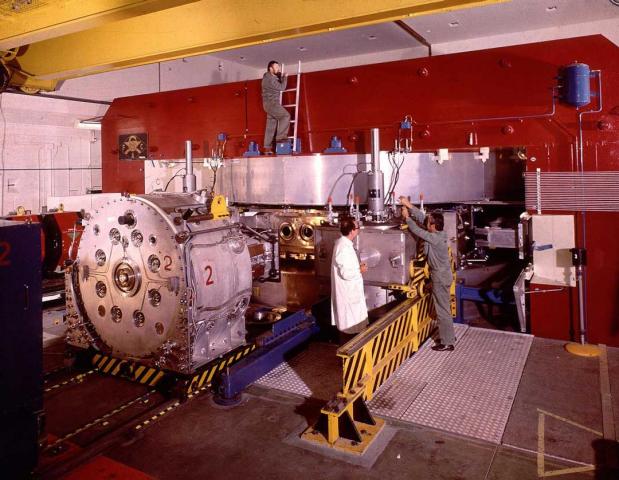First Generation of Particle Accelerators

The first generation of proton accelerators capable of providing intense beams of pions and hence muons as a product of its decay, became available towards the end of 1950s. With these accelerators great advances in muon research were achieved and some embryonic sciences and fundamental particle physics with muons were born. Some notably early accelerators are the Nevis Columbia, SREL Berkeley USA and CERN Synchrocyclotrons (picture above). They were followed around 1974 by a second generation of meson factories at Los Alamos, SIN (PSI) Zurich Switzerland and TRIUMF Vancouver. These accelerators produced muon sources that have enabled muon science to advance and become firmly established.